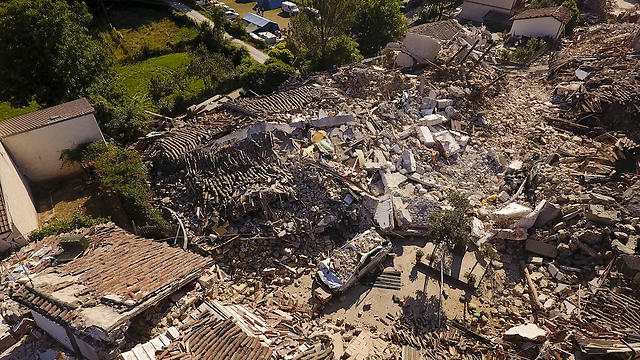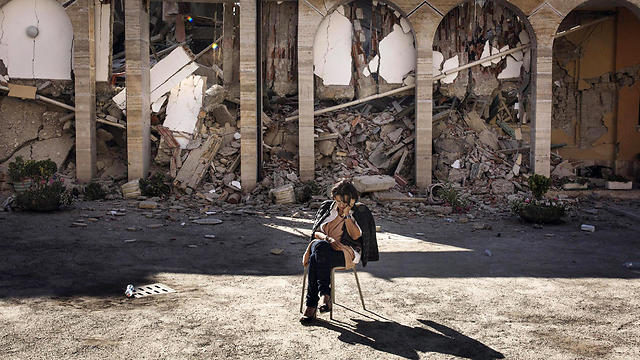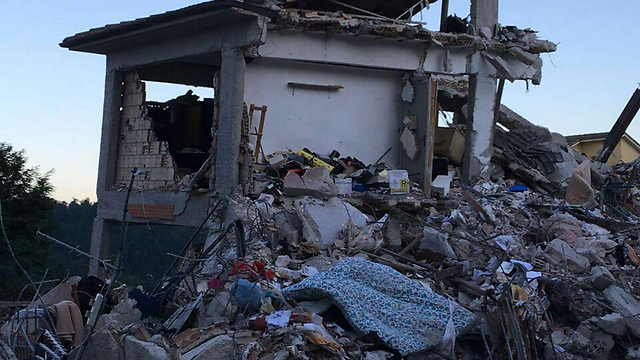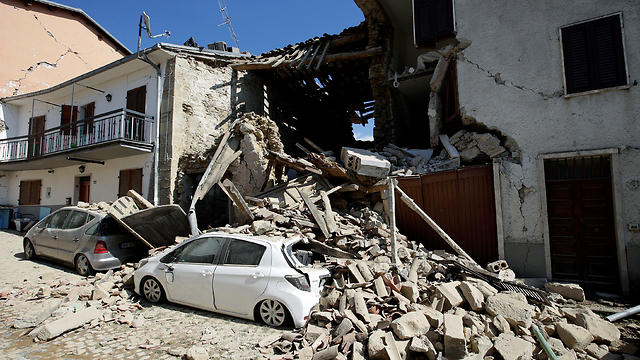Despite legislation and incentives, the vast majority of structures in Israel have not undergone any fortification in preparation, leaving them extremely vulnerable to earthquakes; as Israel is on the Great Rift Valley, a large part of its periphery is particularly at risk, especially in lower income areas.
The earthquake in Italy on Saturday has caused the deaths of hundreds of people and according to experts, Israel is due to experience a similar earthquake itself. Local data on structure fortification, however, shows that Israel as a whole is woefully unprepared for such a scenario, particularly buildings that have not recently been fortified, but also some of those that have. A second problem is that almost no buildings in the country’s periphery have been fortified at all.
Eleven years after the Tama 38 bill aimed at fortifying older buildings was voted into law, only three percent of the public housing structures built before 1980 have been strengthened. Breaking down the data, this means that only 5,000 apartments in 430 buildings have been fortified, out of the 120,000 that are in need of such construction work. 15,000 are currently being renovated in accordance to Tama 38, and 30,000 more have submitted a request to begin the process.

Approximately half of all the older buildings in Israel are three stories high or more, and many of them would completely collapse in the event of an earthquake, due to proximity to the Great Rift Valley that runs from Africa to Syria. Tiberias, Safed, Kiryat Shmona, Beit She’an and Eilat are all quite close to this potential earthquake focal point.
According to the latest State Comptroller report, until 2013 only 36 apartments were fortified in periphery areas more likely to suffer greater damage in the event of an earthquake. Most of these apartments were not reinforced due to it not being a very good financial investment, since the relatively lower price for real estate in the periphery makes it less lucrative for developers and renovators to offer to carry out such projects. This means that those who can afford to live in more expensive buildings have a better chance of surviving an earthquake.
Real estate company Madlan’s Research and Strategy Deputy CEO Raveh Eytan voiced his concern over the slow progress of building reinforcement in Israel.

“Even if we included all the Tama 38 fortification plans, as well as plans to demolish and rebuild current structures, they would all amount to only five percent of all the older apartments,” he said. Eytan estimated the damage that could be caused by such an earthquake as “unbelievable.”
The Government Steering Committee has set in motion a nation-wide disaster scenario of a strong earthquake reaching 7.5 on the Richter Scale and centered around Beit She’an were to hit Israel. 16,000 people are estimated to die in such an event, 6,000 will be seriously injured, 377,000 will be cleared from their homes, 10,000 buildings will be destroyed and 20,00 will suffer severe damage.
Even buildings whose structures have been strengthened are not guaranteed to withstand an earthquake, since some of the companies carrying out Tama 38 are inexperienced in the fortification process.

The chairperson for the Israel Engineers Association for Construction and Infrastructure, Danny Marian, has already repeatedly warned against this danger.
Business information company BDICode noted that since the Israeli government had first approved Tama 38 in 2005, many construction companies have begun offering their services, and that currently there are 900 companies that deal in Tama 38 and complete demolition and rebuilding projects. While some have gained the necessary experience, some companies are relatively new or lack the professional knowhow to do the job responsibly.
The Israel Engineers Association for Construction and Infrastructure sent a letter to the government last week, stating, “It is only a matter of time until the earth will shake in Israel, as well.”

The association also came out against last month’s Housing Cabinet’s decision to remove the requirement to fortify any public housing structure built before 1980.
“It is wrong on a professional level and goes against former government decisions to protect the general population during states of emergency,” the letter read.
Most Tama 38 projects are currently taking place in the center of Israel. About 60 percent of them are located in the larger cities of Tel Aviv, Ramat Gan, Haifa, Herzliya, Ra’anana, Ashdod and Rishon Lezion. Five of these cities are in the center of Israel, while most of the projects taking place in Haifa are located in the pricey Carmel Mountaintop neighborhoods.
Other cities, such as the northern city of Safed, have not seen any fortification projects.

Safed mayor Ilan Shohat was critical of this imbalance in funding. “Once again, the center of Israel comes out on top. The Tama 38 format is incompatible with the very cities and settlements that need it. I’m sure we’ll get the necessary budgets after the next earthquake, but by then there won’t be anyone left to use them,” he said.
Perhaps in response to this rather dismal forecast, earlier in August a new agreement was signed between the Construction and Housing Ministry and state-owned housing company Amidar, for Amidar to carry out many Tama 38 projects in the periphery.
Among other points in the agreement, Amidar has committed to fortify or rebuild 3,500 existing housing units, 2/3 of which will be used as public housing.
BDICode President Roni Brik had an alarming warning of his own for the Israeli government: “The government has neglected to fortify buildings, and the result is going to be a catastrophe with the potential to kill thousands of people and a damage scope that the government won’t be unequipped to handle. For years, we’ve been warning the government that if it does not start with drastic measures to promote Tama 38 and demolition and rebuilding projects, they will in essence be abandoning most of the Israelis living in older buildings to their fate. It is unfathomable that after more than a decade of failed policies laid down by Israeli governments, they still cannot see what’s coming. What are they waiting for, for people to actually die?”
Four years ago, BDICode presented the government with a plan that it claimed would save lives in the periphery areas most at risk during an earthquake. The plan aimed to promote a “tax credit”—the likes of those accepted throughout the world—that would grant contractors credit points in exchange for their fortifying older buildings. Though the plan did not require any government funding, it was ignored, and its idea to help strengthen at-risk buildings was never implemented.
Association of Renovation Contractors in Israel Chairperson, Eran Siv, summed up the fears and challenges in the current situation: “An earthquake like the one in Italy could happen at any moment here in Israel, causing great damage to older structures. Israel is filled with ancient structures that were built hundreds of years ago without an agreed upon building standard. As we are now seeing in broadcasts from Italy, this kind of building can bring about serious damage.”
As reported by Ynetnews
